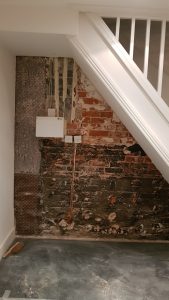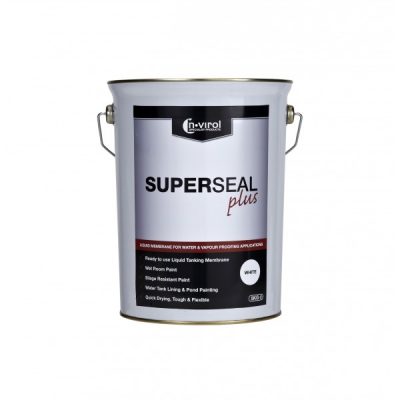Damp Proofing
How to damp proof walls using paint
How to damp proof walls using paint is a question we are often asked.
The absolute key to this answer is to be fully understanding of why a wall is damp before deciding on how to treat it.
The reasons a wall can be damp area as follows:
- A water leak from an internal pipe such as a radiator pipe.
- Condensation brought about by a lack of ventilation
- Penetrating damp which could be brought about by leaking guttering of cavity insulation
- Bridging damp brought about by raised external ground levels such as flower boarders with too much top soil which has breached the DPC.
- The most contentious, Rising Damp, which some would say is a myth but which to build a property today without a DPC would be a contravention of building regulations and against the law so there must be something to it.
Be aware of the nature of construction
For instance, a Cob wall or stone wall with lime mortar will have been built without a damp proof course meaning moisture from the ground would very likely travel up the wall but its construction meant it could breathe and would dry down and go through this repeated cycle and that would be fine. The main thing being not to apply paints, renders, membranes or chemicals that alter or impede this process as ironically, this would most likely make the issue a lot worse.
Once the type of construction has been established and the reason for the presence of high moisture levels in the wall are understood, you then work towards a solution.
It will be quite rare that a qualified damp surveyor, a building surveyor, a heritage specialist or a qualified damp proofing company will arrive at damp proof paint being the solution. The two most common occasions a damp proof paint is applied is across a damp concrete floor slab and as a cheap and quick method to cover over a damp area to a wall before it is plastered or dot and dabbed to get a property sale through.
A qualified damp specialist would not, generally speaking, apply a damp proof paint to a wall unless otherwise in a Cellar that is not being used but a bright, clean, white cellar damp proof paint can be used for short to mid term results.
However, sometimes the occasion will present itself when a damp proof paint will be absolutely fine for its intended use. That would typically be a wall in a room that is perhaps a store, a garage, a shed or something similar where a 20 year remedial guarantee is not required. Ideally the cause of damp would be understood and a fix put in place to prevent it as a liquid damp proof paint can only work as a barrier, it is not a fix to damp.
Using damp proof paint
There are many ways to treat damp. For any brand or type of damp proof paint be it bitumen, polymer, acrylic the absolute necessity is thorough preparation of the surface which it is to be painted to. If for instance, a former paint is already on the wall and is flaking, it should be removed to the point you are back to brick or render. The reason for this is because the bond for the new paint will only be as sound as the material it is being applied to. A brick face is going to be so much sounder than an old paint which might appear well bonded but offers you no long term assurance.
A surface should be completely free from dirt, dust, grease, salts, oil, black mould, algae, etc as again, if it is not clean the new paint will not bond. With most brands of paint the wall can be damp but not running wet. Check before you apply as this is not the case with every product.
With most brands of damp proof paint you will not need a primer coat but you will need to apply two coats of the paint as the first coat will typically be the primer. Always over estimate the amount of paint you need as a surface can be especially porous and you want to ensure a good covering in two coats.
If your intention is to plaster/render over the paint then you are advised to sand flick using kiln dried sand to the first coat while it is still wet to provide a key for the render/plaster.
Be mindful that different types of paint will have different drying times and levels of odour. To help with both you are advised to provide good ventilation to the area you are painting.
Does damp proof paint work?
Yes it does but only if applied correctly, for the right reasons and to the right surfaces.
Can it fail? Yes it can as seen in the image below which shows a failed painted wall which was dot and dabbed. In this instance, a builder thought he knew what he was doing but didn’t and it cost the homeowner a lot of money to put right.

Our preferred product is N-virol Superseal which is a latex polymer product available in 5ltr and 10ltr pots and in black and white. Low odour and quick drying.
Call us on 01329 235252 for further advice or click on the product image above for a link on our website.



